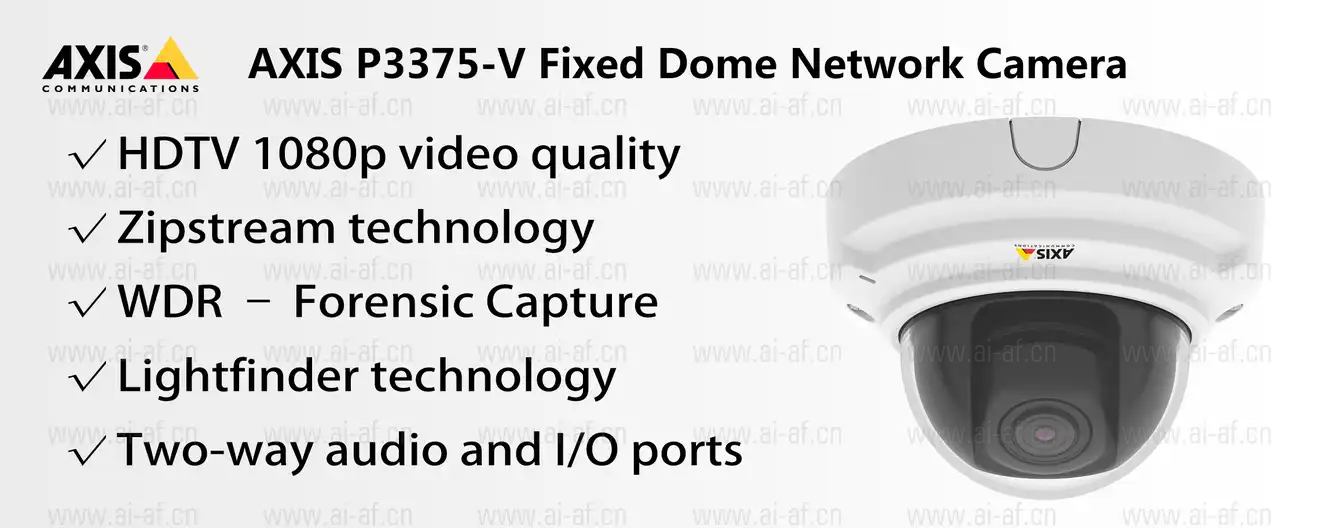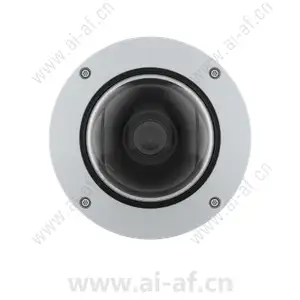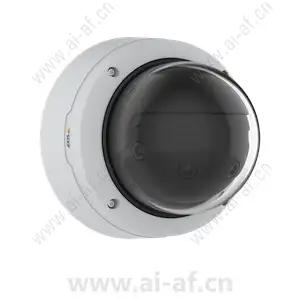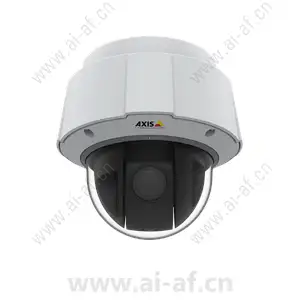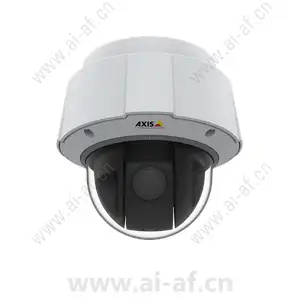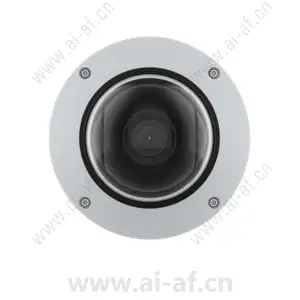AXIS Q6010-E Network Camera - User Manual Setup Guide
Get started Find the device on the network To find Axis devices on the network and assign them IP addresses in Windows®, use AXIS IP Utility or AXIS Device Manager. Both applications are free and can be downloaded from /support . For more information about how to find and assign IP addresses, go to How to assign an IP address and access your device . Browser support You can use the device with the following browsers: Chrome TM Firefox ® Edge TM Safari ® Windows ® recommended recommended ✓ macOS ® recommended recommended ✓ ✓ Linux ® recommended recommended ✓ Other operating systems ✓ ✓ ✓ ✓* *To use AXIS OS web interface with iOS 15 or iPadOS 15, go to Settings > Safari > Advanced > Experimental Features and disable NSURLSession Websocket . If you need more information about recommended
Get started
Find the device on the network
To find Axis devices on the network and assign them IP addresses in Windows®, use AXIS IP Utility or AXIS Device Manager. Both applications are free and can be downloaded from /support.
For more information about how to find and assign IP addresses, go to How to assign an IP address and access your device.
Browser support
You can use the device with the following browsers:
ChromeTM | Firefox® | EdgeTM | Safari® | |
Windows® | recommended | recommended | ✓ | |
macOS® | recommended | recommended | ✓ | ✓ |
Linux® | recommended | recommended | ✓ | |
Other operating systems | ✓ | ✓ | ✓ | ✓* |
*To use AXIS OS web interface with iOS 15 or iPadOS 15, go to Settings > Safari > Advanced > Experimental Features and disable NSURLSession Websocket.
If you need more information about recommended browsers, go to AXIS OS Portal.
Open the device's web interface
Open a browser and type the IP address or host name of the Axis device.
If you do not know the IP address, use AXIS IP Utility or AXIS Device Manager to find the device on the network.
Type the username and password. If you access the device for the first time, you must create an administrator account. See Create an administrator account.
For descriptions of all the controls and options in the device’s web interface, see .
Create an administrator account
The first time you log in to your device, you must create an administrator account.
Enter a username.
Enter a password. See Secure passwords.
Re-enter the password.
Accept the license agreement.
Click Add account.
The device has no default account. If you lose the password for your administrator account, you must reset the device. See Reset to factory default settings.
Secure passwords
Axis devices send the initially set password in clear text over the network. To protect your device after the first login, set up a secure and encrypted HTTPS connection and then change the password.
The device password is the primary protection for your data and services. Axis devices do not impose a password policy as they may be used in various types of installations.
To protect your data we strongly recommend that you:
Use a password with at least 8 characters, preferably created by a password generator.
Don’t expose the password.
Change the password at a recurring interval, at least once a year.
Web interface overview
This video gives you an overview of the device’s web interface.
Configure your device
Adjust the image
This section includes instructions about configuring your device. If you want to learn more about how certain features work, go to Learn more.
Replace the lens
Stop all recordings and disconnect power from the product.
Remove the lens.
Attach the new lens.
Reconnect the power.
Log in to the product’s webpage, go to Settings > System > Orientation > Camera X > Lens selection and select the new lens.
Adjust the focus.
Do a positioning calibration of the camera.
Adjust the zoom and focus
- To adjust the zoom:
Go to Video > Installation and adjust the zoom slider.
- To adjust the focus:
Click
 to show the autofocus area.
to show the autofocus area.Adjust the autofocus area to cover the part of the image that you want to be in focus.
If you don’t select an autofocus area, the camera focuses on the entire scene. We recommend that you focus on a static object.
Click Autofocus.
To fine tune the focus, adjust the focus slider.
Select exposure mode
To improve image quality for specific surveillance scenes, use exposure modes. Exposure modes lets you control aperture, shutter speed, and gain. Go to Video > Image > Exposure and select between the following exposure modes:
For most use cases, select Automatic exposure.
For environments with certain artificial lighting, for example fluorescent lighting, select Flicker-free.
Select the same frequency as the power line frequency.
For environments with certain artificial light and bright light, for example outdoors with fluorescent lighting at night and sun during daytime, select Flicker-reduced.
Select the same frequency as the power line frequency.
To lock the current exposure settings, select Hold current.
Benefit from IR light in low-light conditions by using night mode
Your camera uses visible light to deliver color images during the day. But as the visible light diminishes, color images become less bright and clear. If you switch to night mode when this happens, the camera uses both visible and near-infrared light to deliver bright and detailed black-and-white images instead. You can set the camera to switch to night mode automatically.
Go to Video > Image > Day-night mode, and make sure that the IR-cut filter is set to Auto.
To set at what light level you want the camera to switch to night mode, move the Threshold slider toward Bright or Dark.
- Note
If you set the switch to night mode to occur when it’s brighter, the image remains sharper as there is less low-light noise. If you set the switch to occur when it’s darker, the image colors are maintained for longer, but there is more image blur due to low-light noise.
Reduce noise in low-light conditions
To reduce noise in low-light conditions, you can adjust one or more of the following settings:
Adjust the trade-off between noise and motion blur. Go to Video > Image > Exposure and move the Blur-noise trade-off slider toward Low noise.
Set the exposure mode to automatic.
- Note
A high max shutter value can result in motion blur.
To slow down the shutter speed, set max shutter to the highest possible value.
- Note
When you reduce the max gain, the image can become darker.
Set the max gain to a lower value.
If possible, move the slider under Aperture toward Open.
Reduce motion blur in low-light conditions
- To reduce motion blur in low-light conditions, adjust one or more of the following settings in Video > Image > Exposure:
Move the Blur-noise trade-off slider toward Low motion blur.
- Note
When you increase the gain, image noise also increases.
Set Max shutter to a shorter time, and Max gain to a higher value.
- If you still have problems with motion blur:
Increase the light level in the scene.
Mount the camera so that objects move toward it or away from it rather than sideways.
Handle scenes with strong backlight
Dynamic range is the difference in light levels in an image. In some cases the difference between the darkest and the brightest areas can be significant. The result is often an image where either the dark or the bright areas are visible. Wide dynamic range (WDR) makes both dark and bright areas of the image visible.


- WDR can cause artifacts in the image.
- WDR may not be available for all capture modes.
Go to Video > Image > Wide dynamic range.
Turn on WDR.
If you still have problems, go to Exposure and adjust the Exposure zone to cover the area of interest.
Find out more about WDR and how to use it at /web-articles/wdr.
Hide parts of the image with privacy masks
You can create one or several privacy masks to hide parts of the image.
Go to Video > Privacy masks.
Click
 .
.Click the new mask and type a name.
Adjust the size and placement of the privacy mask according to your needs.
To change the color for all privacy masks, click Privacy masks and select a color.
See also Privacy masks
View and record video
This section includes instructions about configuring your device. To learn more about how streaming and storage works, go to Streaming and storage.
Reduce bandwidth and storage
Reducing the bandwidth can lead to loss of detail in the image.
Go to Video > Stream.
Click
 in the live view.
in the live view.Select Video format H.264.
Go to Video > Stream > General and increase Compression.
Go to Video > Stream > Zipstream and do one or more of the following:
- Note
The Zipstream settings are used for both H.264 and H.265.
Select the Zipstream Strength that you want to use.
Turn on Optimize for storage. This can only be used if the video management software supports B-frames.
Turn on Dynamic FPS.
Turn on Dynamic GOP and set a high Upper limit GOP length value.
Most web browsers don’t support H.265 decoding and because of this the device doesn’t support it in its web interface. Instead you can use a video management system or application that supports H.265 decoding.
Set up network storage
- To store recordings on the network, you need to set up your network storage.
Go to System > Storage.
Click
 Add network storage under Network storage.
Add network storage under Network storage.Type the IP address of the host server.
Type the name of the shared location on the host server under Network share.
Type the username and password.
Select the SMB version or leave it on Auto.
Select Add share without testing if you experience temporary connection issues, or if the share is not yet configured.
Click Add.
Record and watch video
- Record video directly from the camera
Go to Video > Image.
To start a recording, click
 .
.If you haven’t set up any storage, click
 and
and  . For instructions on how to set up network storage, see Set up network storage
. For instructions on how to set up network storage, see Set up network storageTo stop recording, click
 again.
again.
- Watch video
Go to Recordings.
Click
 for your recording in the list.
for your recording in the list.
Set up rules for events
You can create rules to make your device perform an action when certain events occur. A rule consists of conditions and actions. The conditions can be used to trigger the actions. For example, the device can start a recording or send an email when it detects motion, or show an overlay text while the device is recording.
To learn more, check out our guide Get started with rules for events.
Trigger an action
Go to System > Events and add a rule. The rule defines when the device will perform certain actions. You can set up rules as scheduled, recurring, or manually triggered.
Enter a Name.
Select the Condition that must be met to trigger the action. If you specify more than one condition for the rule, all of the conditions must be met to trigger the action.
Select which Action the device should perform when the conditions are met.
If you make changes to an active rule, the rule must be turned on again for the changes to take effect.
Record video when the camera detects an object
This example explains how to set up the camera to start recording to the SD card when the camera detects an object. The recording will include five seconds before detection and one minute after detection ends.
Before you start:
Make sure you have an SD card installed.
Start the application if it is not already running.
Make sure you have set up the application according to your needs.
- Create a rule:
Go to System > Events and add a rule.
Type a name for the rule.
In the list of actions, under Recordings, select Record video while the rule is active.
In the list of storage options, select SD_DISK.
Select a camera and a stream profile.
Set the prebuffer time to 5 seconds.
Set the postbuffer time to 1 minute.
Click Save.
Show a text overlay in the video stream when the device detects an object
This example explains how to display the text “Motion detected” when the device detects an object.
Start the application if it is not already running.
Make sure you have set up the application according to your needs.
- Add the overlay text:
Go to Video > Overlays.
Under Overlays, select Text and click
 .
.Enter
#Din the text field.Choose text size and appearance.
To position the text overlay, click
 and select an option.
and select an option.
- Create a rule:
Go to System > Events and add a rule.
Type a name for the rule.
In the list of actions, under Overlay text, select Use overlay text.
Select a video channel.
In Text, type “Motion detected”.
Set the duration.
Click Save.
Send an email automatically if someone spray paints the lens
- Activate the tampering detection:
Go to System > Detectors > Camera tampering.
Set a value for Trigger delay. The value indicates the time that must pass before an email is sent.
Turn on Trigger on dark images to detect if the lens is sprayed, covered, or rendered severely out of focus.
- Add an email recipient:
Go to System > Events > Recipients and add a recipient.
Type a name for the recipient.
Select Email.
Type an email address to send the email to.
The camera doesn’t have it’s own email server, so it has to log into another email server to send mails. Fill in the rest of the information according to your email provider.
To send a test email, click Test.
Click Save.
- Create a rule:
Go to System > Events > Rules and add a rule.
Type a name for the rule.
In the list of conditions, under Video, select Tampering.
In the list of actions, under Notifications, select Send notification to email and then select the recipient from the list.
Type a subject and a message for the email.
Click Save.
Cleaning recommendations
If the device gets grease stains or becomes heavily soiled, you can clean it with mild, solvent-free soap or detergent.
Never use harsh detergent, for example gasoline, benzene, or acetone.
Use a can of compressed air to remove any dust or loose dirt from the device.
Clean the device with a soft cloth dampened with mild detergent and lukewarm water.
Wipe carefully with a dry cloth.
Avoid cleaning in direct sunlight or at elevated temperatures, as this may cause stains when the water droplets dry.
Learn more
Privacy masks
A privacy mask is a user-defined area that prevents users from viewing a part of the monitored area. In the video stream, privacy masks appear as blocks of solid color.
You’ll see the privacy mask on all snapshots, recorded video, and live streams.
You can use the VAPIX® application programming interface (API) to hide the privacy masks.
If you use multiple privacy masks it may affect the product’s performance.
You can create several privacy masks. Each mask can have 3 to 10 anchor points.
Streaming and storage
Video compression formats
Decide which compression method to use based on your viewing requirements, and on the properties of your network. The available options are:
H.264 or MPEG-4 Part 10/AVC
H.264 is a licensed technology. The Axis product includes one H.264 viewing client license. To install additional unlicensed copies of the client is prohibited. To purchase additional licenses, contact your Axis reseller.
H.264 can, without compromising image quality, reduce the size of a digital video file by more than 80% compared to the Motion JPEG format and by as much as 50% compared to older MPEG formats. This means that less network bandwidth and storage space are required for a video file. Or seen another way, higher video quality can be achieved for a given bitrate.
H.265 or MPEG-H Part 2/HEVC
H.265 can, without compromising image quality, reduce the size of a digital video file by more than 25% compared to H.264.
- H.265 is licensed technology. The Axis product includes one H.265 viewing client license. Installing additional unlicensed copies of the client is prohibited. To purchase additional licenses, contact your Axis reseller.
- Most web browsers don’t support H.265 decoding and because of this the camera doesn’t support it in its web interface. Instead you can use a video management system or application supporting H.265 decoding.
How do Image, Stream, and Stream profile settings relate to each other?
The Image tab contains camera settings that affect all video streams from the product. If you change something in this tab, it immediately affects all video streams and recordings.
The Stream tab contains settings for video streams. You get these settings if you request a video stream from the product and don’t specify for example resolution, or frame rate. When you change the settings in the Stream tab, it doesn’t affect ongoing streams, but it will take effect when you start a new stream.
The Stream profiles settings override the settings from the Stream tab. If you request a stream with a specific stream profile, the stream contains the settings of that profile. If you request a stream without specifying a stream profile, or request a stream profile that doesn't exist in the product, the stream contains the settings from the Stream tab.
Bitrate control
Bitrate control helps you to manage the bandwidth consumption of your video stream.
Variable bitrate (VBR)
Variable bitrate allows the bandwidth consumption to vary depending on the level of activity in the scene. The more activity, the more bandwidth you need. With variable bitrate you are guaranteed constant image quality, but you need to make sure you have storage margins.

Maximum bitrate (MBR)
Maximum bitrate lets you set a target bitrate to handle bitrate limitations in your system. You might see a decline in image quality or frame rate as the instantaneous bitrate is kept below the specified target bitrate. You can choose to prioritize either image quality or frame rate. We recommend that you configure the target bitrate to a higher value than the expected bitrate. This gives you a margin in case there is a high level of activity in the scene.

- Target bitrate
Average bitrate (ABR)
With average bitrate, the bitrate is automatically adjusted over a longer period of time. This is so you can meet the specified target and provide the best video quality based on your available storage. Bitrate is higher in scenes with a lot of activity, compared to static scenes. You are more likely to get better image quality when in scenes with a lot of activity if you use the average bitrate option. You can define the total storage required to store the video stream for a specified amount of time (retention time) when image quality is adjusted to meet the specified target bitrate. Specify the average bitrate settings in one of the following ways:
To calculate the estimated storage need, set the target bitrate and the retention time.
To calculate the average bitrate, based on available storage and required retention time, use the target bitrate calculator.

- Target bitrate
- Actual average bitrate
- You can also turn on maximum bitrate and specify a target bitrate within the average bitrate option.

- Target bitrate
- Actual average bitrate
Applications
With applications, you can get more out of your Axis device. AXIS Camera Application Platform (ACAP) is an open platform that makes it possible for third parties to develop analytics and other applications for Axis devices. Applications can be preinstalled on the device, available for download for free, or for a license fee.
Autopilot
Autopilot is an application that monitors an area of interest. Events on the device can be set to trigger an alarm or to start recording a video if a person, vehicle or other objects are moving in the area.
To use the application on multichannel devices, configure and run the application on at least one device.
Record video when the camera detects moving objects in an area of interest
This example explains how to set up the camera to detect moving objects in an area of interest and start recording it.
Before you start:
Connect the PTZ camera to the multisensor camera.
Create a stream profile in the PTZ camera.
Set up network storage or onboard storage to the PTZ camera.
Check that all sensors are set and calibrated.
Configure the autopilot application on the multisensor camera:
Go to Settings > Apps > Autopilot.
Start and open the application.
Go to the video control bar and select the camera on which you want to view the area of interest.
Click
 to create a new profile.
to create a new profile.Click Profile properties and name your profile.
Adjust the configuration to the area of interest.
To reduce false alarms, set Ignore filters for small, short lived, or swaying objects.
Set Profile priority if you have more than one area of interest to detect.
Go to the Autopilot settings tab and turn on Object tracking.
Create a rule in the PTZ camera:
Go to Settings > System > Events and add a rule.
Type a name for the rule.
In the list of conditions, under PTZ, select PTZ movement: Camera 1.
In the list of actions, under Recordings, select Record video while the rule is active.
Select a stream profile.
Select a storage option.
Click Save.
Troubleshooting
Reset to factory default settings
Reset to factory default should be used with caution. A reset to factory default resets all settings, including the IP address, to the factory default values.
To reset the product to the factory default settings:
Press and hold the control button and the restart button at the same time.
Release the restart button but continue to hold down the control button for 15–30 seconds until the status LED indicator flashes amber.
Release the control button. The process is complete when the status LED indicator turns green. The product has been reset to the factory default settings. If no DHCP server is available on the network, the default IP address is
192.168.0.90.Use the installation and management software tools to assign an IP address, set the password and access the video stream.
You can also reset parameters to factory default through the device’s web interface. Go to Maintenance > Factory default and click Default.
AXIS OS options
Axis offers device software management according to either the active track or the long-term support (LTS) tracks. Being on the active track means continuously getting access to all the latest product features, while the LTS tracks provide a fixed platform with periodic releases focused mainly on bug fixes and security updates.
Using AXIS OS from the active track is recommended if you want to access the newest features, or if you use Axis end-to-end system offerings. The LTS tracks are recommended if you use third-party integrations, which are not continuously validated against the latest active track. With LTS, the products can maintain cybersecurity without introducing any significant functional changes or affecting any existing integrations. For more detailed information about Axis device software strategy, go to /support/device-software.
Check the current AXIS OS version
AXIS OS determines the functionality of our devices. When you troubleshoot a problem, we recommend that you to start by checking the current AXIS OS version. The latest version might contain a correction that fixes your particular problem.
To check the current AXIS OS version:
Go to the device’s web interface > Status.
Under Device info, see the AXIS OS version.
Upgrade AXIS OS
- Preconfigured and customized settings are saved when you upgrade the device software (provided that the features are available in the new AXIS OS) although this is not guaranteed by Axis Communications AB.
- Make sure the device remains connected to the power source throughout the upgrade process.
When you upgrade the device with the latest AXIS OS version in the active track, the product receives the latest functionality available. Always read the upgrade instructions and release notes available with each new release before you upgrade. To find the latest AXIS OS version and the release notes, go to /support/device-software.
Download the AXIS OS file to your computer, available free of charge at /support/device-software.
Log in to the device as an administrator.
Go to Maintenance > AXIS OS upgrade and click Upgrade.
- When the upgrade has finished, the product restarts automatically.
You can use AXIS Device Manager to upgrade multiple devices at the same time. Find out more at /products/axis-device-manager.
Technical issues, clues and solutions
If you can’t find what you’re looking for here, try the troubleshooting section at /support.
| Problems upgrading the firmware | |
Firmware upgrade failure | If the firmware upgrade fails, the device reloads the previous firmware. The most common reason is that the wrong firmware file has been uploaded. Check that the name of the firmware file corresponds to your device and try again. |
| Problems setting the IP address | |||
The device is located on a different subnet | If the IP address intended for the device and the IP address of the computer used to access the device are located on different subnets, you cannot set the IP address. Contact your network administrator to obtain an IP address. | ||
The IP address is being used by another device | Disconnect the Axis device from the network. Run the ping command (in a Command/DOS window, type
| ||
Possible IP address conflict with another device on the same subnet | The static IP address in the Axis device is used before the DHCP server sets a dynamic address. This means that if the same default static IP address is also used by another device, there may be problems accessing the device. | ||
| The device cannot be accessed from a browser | ||||||||||
Cannot log in | When HTTPS is enabled, ensure that the correct protocol (HTTP or HTTPS) is used when attempting to log in. You may need to manually type If the password for the user root is lost, the device must be reset to the factory default settings. See Reset to factory default settings. | |||||||||
The IP address has been changed by DHCP | IP addresses obtained from a DHCP server are dynamic and may change. If the IP address has been changed, use AXIS IP Utility or AXIS Device Manager to locate the device on the network. Identify the device using its model or serial number, or by the DNS name (if the name has been configured). If required, a static IP address can be assigned manually. For instructions, go to /support. | |||||||||
| The device is accessible locally but not externally | |||||||||||||||
To access the device externally, we recommend using one of the following applications for Windows®:
For instructions and download, go to /vms. |
| Problems with streaming | |||||||||||||||||
Multicast H.264 only accessible by local clients | Check if your router supports multicasting, or if the router settings between the client and the device need to be configured. The TTL (Time To Live) value may need to be increased. | ||||||||||||||||
No multicast H.264 displayed in the client | Check with your network administrator that the multicast addresses used by the Axis device are valid for your network. Check with your network administrator to see if there is a firewall preventing viewing. | ||||||||||||||||
Poor rendering of H.264 images | Ensure that your graphics card is using the latest driver. The latest drivers can usually be downloaded from the manufacturer’s website. | ||||||||||||||||
Color saturation is different in H.264 and Motion JPEG | Modify the settings for your graphics adapter. Go to the adapter’s documentation for more information. | ||||||||||||||||
Lower frame rate than expected |
| ||||||||||||||||
Can't select H.265 encoding in live view | Web browsers do not support H.265 decoding. Use a video management system or application supporting H.265 decoding. | ||||||||||||||||
| One-click PTZ control is not working properly | ||||||||||||||||||||||||||||||
Check focus on all four lenses | Go to Settings > Apps > AXIS Installation wizard, and open the application. Go to Camera X > Lens selection, and select the lens. Do an Installation focus. | |||||||||||||||||||||||||||||
Check the PTZ remote connection status | Go to Settings > Apps > AXIS Installation wizard, and open the application. Go to General > PTZ remote connection, and make sure that the status is set to Connected. If it’s not, click Configure and do a PTZ remote connection. Enter the correct IP address and password. | |||||||||||||||||||||||||||||
Check the PTZ positioning calibration status | Go to Settings > Apps > AXIS Installation wizard and open the application. Go to General > PTZ positioning calibration, and make sure that the status is set to Calibrated. If it’s not, do an auto calibration or a manual calibration. | |||||||||||||||||||||||||||||
| Quad view is not working properly | |
Problems displaying all camera views on one screen. | Quad view doesn’t work if any of the camera lenses are rotated. |
Performance considerations
When setting up your system, it is important to consider how various settings and situations affect the performance. Some factors affect the amount of bandwidth (the bitrate) required, others can affect the frame rate, and some affect both. If the load on the CPU reaches its maximum, this also affects the frame rate.
The following factors are the most important to consider:
High image resolution or lower compression levels result in images containing more data which in turn affects the bandwidth.
Rotating the image in the GUI can increase the product's CPU load.
Access by large numbers of Motion JPEG or unicast H.264 clients affects the bandwidth.
Access by large numbers of Motion JPEG or unicast H.265 clients affects the bandwidth.
Simultaneous viewing of different streams (resolution, compression) by different clients affects both frame rate and bandwidth.
Use identical streams wherever possible to maintain a high frame rate. Stream profiles can be used to ensure that streams are identical.
Accessing Motion JPEG and H.264 video streams simultaneously affects both frame rate and bandwidth.
Accessing Motion JPEG and H.265 video streams simultaneously affects both frame rate and bandwidth.
Heavy usage of event settings affects the product’s CPU load which in turn affects the frame rate.
Using HTTPS may reduce frame rate, in particular if streaming Motion JPEG.
Heavy network utilization due to poor infrastructure affects the bandwidth.
Viewing on poorly performing client computers lowers perceived performance and affects frame rate.
Running multiple AXIS Camera Application Platform (ACAP) applications simultaneously may affect the frame rate and the general performance.
Specifications
Product overview

- SD card slot
- Control button
- Restart button
- LED indicator
- Network connector
- PTZ camera adapter
- Camera heads
- Heater
LED indicators
| Status LED | Indication |
| Unlit | Connection and normal operation. |
| Green | Shows steady green for 10 seconds for normal operation after startup completed. |
| Amber | Steady during startup. Flashes during device software upgrade or reset to factory default. |
| Amber/Red | Flashes amber/red if network connection is unavailable or lost. |
SD card slot
- Risk of damage to SD card. Don’t use sharp tools, metal objects, or excessive force when inserting or removing the SD card. Use your fingers to insert and remove the card.
- Risk of data loss and corrupted recordings. Unmount the SD card from the device’s web interface before removing it. Don’t remove the SD card while the product is running.
This device supports SD/SDHC/SDXC cards.
For SD card recommendations, see .
![]()
![]()
![]() SD, SDHC, and SDXC Logos are trademarks of SD-3C LLC. SD, SDHC and SDXC are trademarks or registered trademarks of SD-3C, LLC in the United States, other countries or both.
SD, SDHC, and SDXC Logos are trademarks of SD-3C LLC. SD, SDHC and SDXC are trademarks or registered trademarks of SD-3C, LLC in the United States, other countries or both.
Buttons
Control button
- The control button is used for:
Resetting the product to factory default settings. See Reset to factory default settings.
Restart button
Press the restart button to restart the product.
Connectors
Network connector
RJ45 Push-pull Connector (IP66) with High Power over Ethernet (High PoE).
To comply with the IP66-rated design of the camera and maintain the IP66 protection, the supplied RJ45 Push-pull Connector (IP66) shall be used. Alternatively, use the RJ45 IP66-rated cable with premounted connector which is available from your Axis reseller. Do not remove the plastic network connector shield from the camera.

